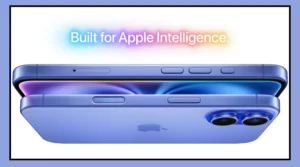Apple is working on a new technology that will let users control their iPhones using just their minds. This means people could use their phones without touching them—simply by thinking.
This new innovation is called Brain-Computer Interface (BCI). It creates a direct link between the brain and the device. According to a U.S. newspaper, this technology is similar to Elon Musk’s Neuralink, where a brain implant lets users control devices.
Apple is developing this in partnership with Synchron, a brain-interface company based in New York.
This technology brings hope to people with serious spinal injuries, ALS, or stroke, especially those with limited body movement.
How does it work?
The device, called Stentrode, is developed by Synchron and is placed in a vein close to the brain. It picks up brain signals and turns them into digital commands.
For example, if someone thinks about opening an app, the device detects that thought and opens the app on an iPhone or iPad. The process uses both special hardware and software.
This Stentrode device works with Apple’s Switch Control feature, which already helps users control their devices in various ways.
Until now, companies had to make computers think that brain signals were coming from a mouse, says Synchron CEO Tom Oxley.
But now, Apple’s new system—possibly launching this year—will allow direct connection between implants and devices.
The First User’s Story
A person named Mark Jackson, who suffers from ALS, is already using Synchron’s device. He can control his Vision Pro headset and iPhone using only his mind. Even though he can’t walk, he’s still able to use Apple devices independently.
Apple is also planning to release new software tools soon, which will let app developers make their apps work with this brain technology.
Rivalry with Neuralink
Elon Musk’s company, Neuralink, is already ahead in this field. It has tested its N1 brain implant on humans.
Neuralink’s system is more advanced—while Synchron’s device has 16 electrodes, Neuralink’s has over 1,000.
Hopes for the Future
According to a report by Morgan Stanley, around 150,000 people in the U.S. with limited hand function could be the first to use this technology.
The report predicts it could be widely available by 2030, though Synchron’s CEO believes it could come even sooner. This breakthrough could transform not only technology but also millions of lives.
























